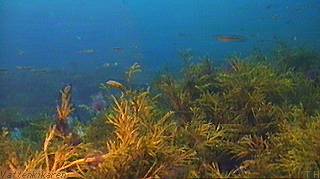 |
 |
 |

GradientsDifferent beaches are on different levels concerning all of these gradients and conditions can change in the same area on a regular or irregular and long term basis. All this make beach conditions very different and that each beach is unique. In this section though, we are concentrating on cliffs and rocky beaches. We will try to briefly describe and explain some of the factors that are important and to enable a better understanding of how it is to live amongst cliffs and rocks and what effects the distribution of organisms. Notice how the different environmental gradients interact with each other and how it is difficult to discuss one gradient without taking into account another.
| Cliffs and rocks are fantastic! | ||||
| Zoning and flecked occurrence | ||||||
| Animals that are attached | ||||||
| Modular construction | ||||||
| Variation and change | ||||||
| Variations in water level | ||||||
| Wave exposure | ||||||
| Both cliffs and rocks | ||||||
| Freshwater and saltwater | ||||||
| Geography, climate and history | ||||||
| Organisms life cycles | ||||||
| Organisms effect on each other | ||||||
| Energy and the flow of material | ||||||